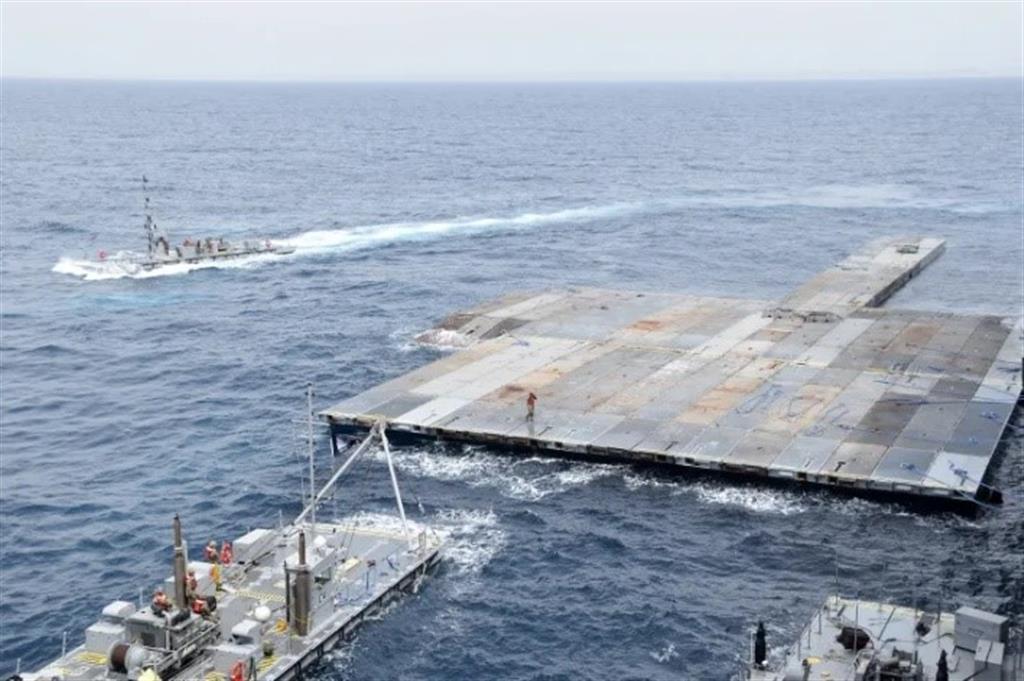By Federica Marsi
Aid groups have criticized the pier as a costly and ineffective distraction from the fact that land deliveries are the most efficient way to help Gaza.
What was initially proposed as a way to supplement aid to a starving population as Israel’s punishing war on them continues may become the only source after Israel seized and closed the Rafah land crossing with Egypt.
Israelis have also begun attacking aid trucks heading to Gaza through Israeli crossings.
CENTCOM said aid trucks are “expected to begin moving ashore in the coming days” via the pier. Shipping data shows the MV Sagamore cargo ship carrying the aid is near Cyprus after waiting in Ashdod, Israel, for a few days due to bad weather.
How does the pier work?
The US has long used Joint Logistics Over the Shore (JLOTS) to land troops and equipment in areas where they have no access to a fixed pier. It is using the same capability to build the Trident Pier for Gaza.
The project has two components, a floating offshore barge that is a first point of arrival for aid deliveries and a 550-metre (1,800ft) causeway anchored to the shore.
Aid is assembled and inspected in Cyprus, in the presence of Israeli officials so it requires no further checks on arrival, then departs by cargo ship -the Sagamore, so far.
When it arrives after a journey of about 15 hours, aid is unloaded onto the floating pier and then loaded on trucks driven by aid workers that board smaller US Army boats to be transported to the Gaza shore. When the operation reaches full capacity, 150 trucks are expected to make their way into Gaza daily.





